What is Search Intent in SEO and Why Does It Matter?
People don’t Google mindlessly. There are some reasons for every search. This reason or reason that makes someone search something, is known as search intent. You can also call it user intent.
Search intent tells why someone is searching for something. You need to understand users’ inspiration for a search to create engaging content, and satisfy users’ Google search intent. When you meet the search query, it improves user experience and hints Google to boost your ranking.
The importance of user intent has increased lately. Google does not only promote content that uses some random keywords. It goes beyond that. Google prioritizes relevance and user intent as a ranking factor.
An Overview of Search Intent
So, what is search intent? Let’s not delve into definitions. Instead, let’s explore this in detail. When you Google something, you need to put some phrases. These phrases are called keywords.
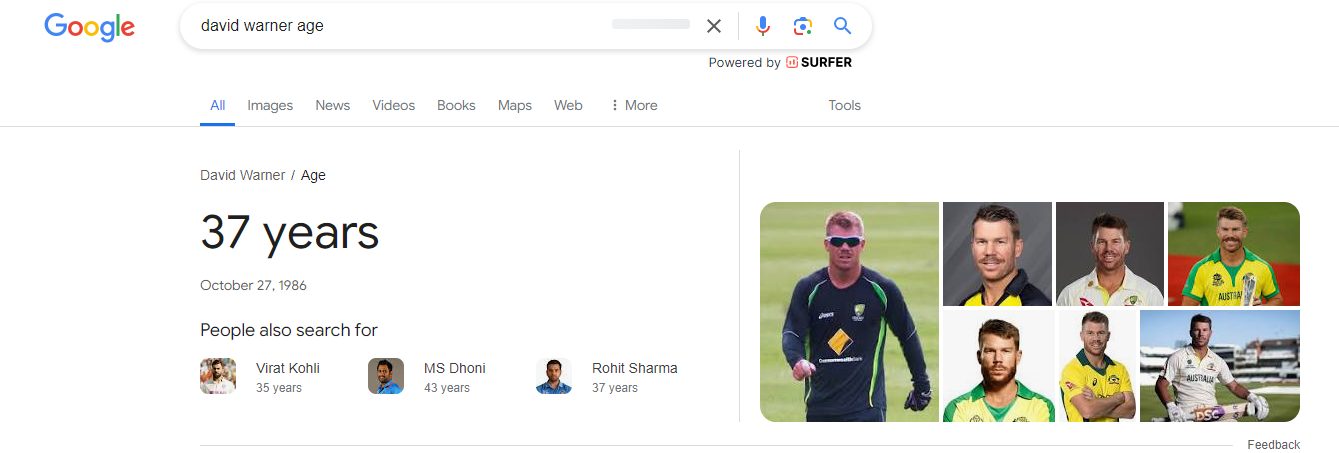
You can see here that I searched for David Warner’s age. Here, this “David Warner age” is a keyword. And when using this phrase, I surely had a target. I wanted to know his age. In other words, I was looking for information.
But we don’t always search only for basic information. Let’s say I am searching for “Mobile phone under 200 USD.”
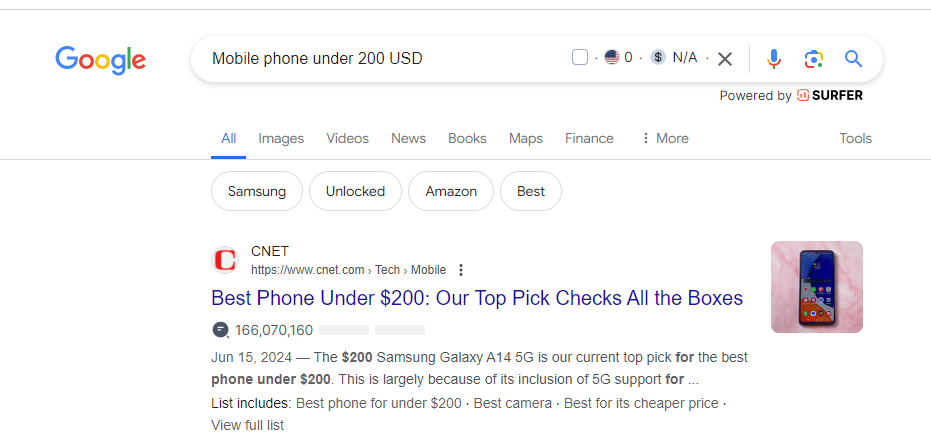
Here, my intention is to buy a phone. However, I am not sure yet about what phone to buy. I need more information to choose the perfect phone under my budget. So, here Google is suggesting me content that lists down the best phone within 200 USD.
Now, let’s make some changes in our queries.
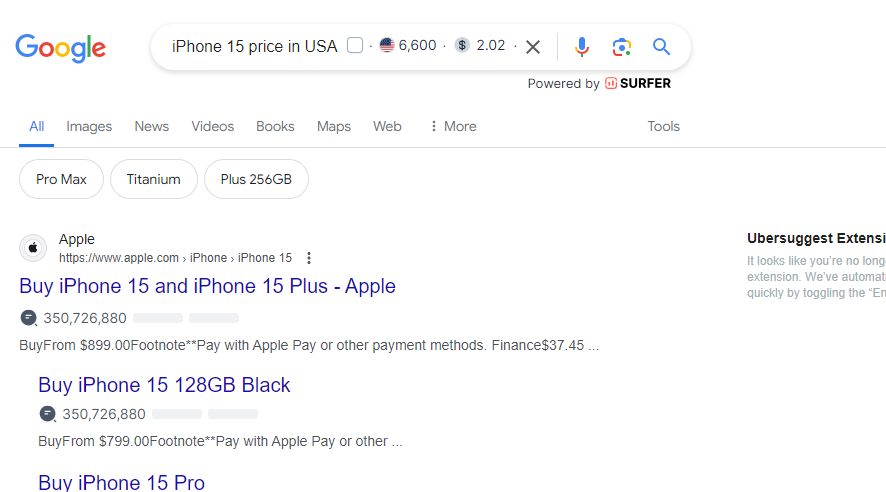
Here, I had a specific intention. I want to purchase an iPhone and so Google showed me Apple’s website. From here, I can make my purchase. This saves me from making additional searches.
This is how Google utilizes user intent. It tries to understand why a user is making a search and tries to showcase the most relevant content.
4 Types of User Search Intent
According to Backlinko, you can classify 99% searches into four categories. These four search intent types are:
- Navigational
- Informational
- Commercial, and
- Transactional
Based on the intent, you can also categorize the keywords. Your content format needs to be outlined based on it. Therefore, you have to understand these intentions in detail.
1. Navigational Keywords
You can guess it from the name. These keywords are used to find a specific location. It helps a user find their direction. For example, you may need to find the nearest McDonalds. All you have to do is type the name of it.
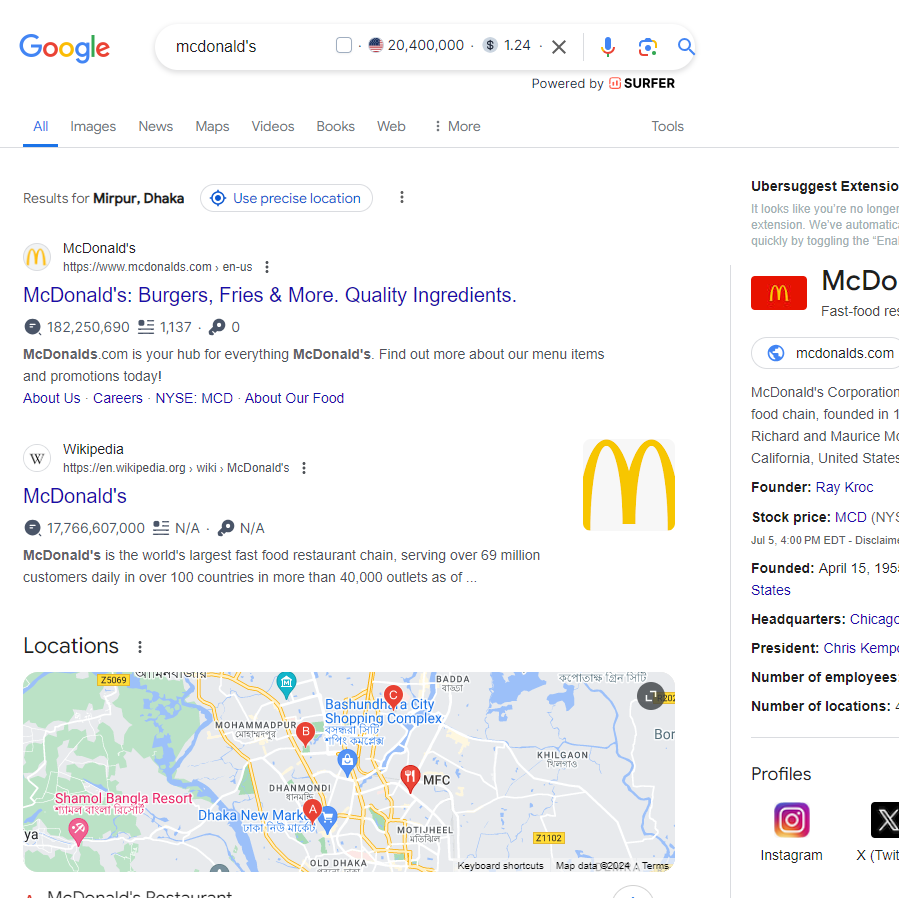
Google understands that you need direction here. Now, what can you do with a navigational keyword? You cannot rank for this keyword since people are not looking for blog articles when they are searching for this keyword.
When working on a new project, you will find many navigational keywords. You don’t need to write blog posts on them. They require you to work on GMB and other SEO practices so that people can find directions. It saves you from creating content that no one is looking for. Also, remember that SEO is not dead.
2. Informational Search Intent
The most common type of search intent is informational. People often Goggles for various information. These keywords are very important for SEO. You can create engaging content focusing on these keywords and generate more traffic.
Nonetheless, you have to figure out what information your audience is exactly looking for. Your content needs to include that information to satisfy the user experience.
Think about the keyword- “smart phones.” People can use this keyword for different purposes. For example: “How to choose the right smartphone”
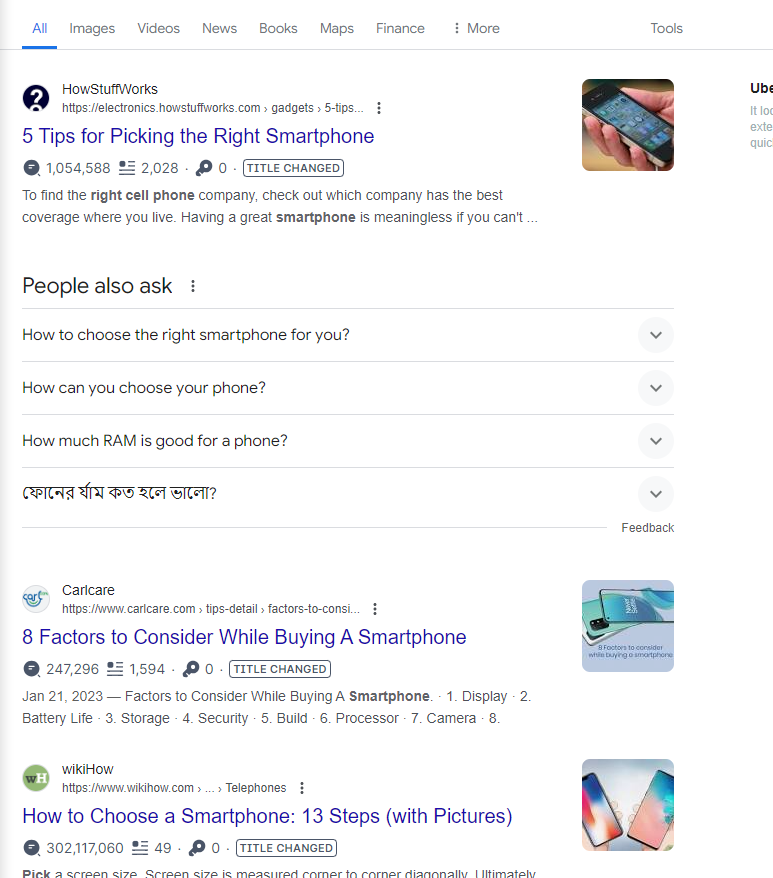
Here, you need to give information on how a user can compare different phones. This will help you satisfy the user. However, you need to decorate your content differently for the content “best smartphones 2024.” Such keywords can have both informational and commercial intent.
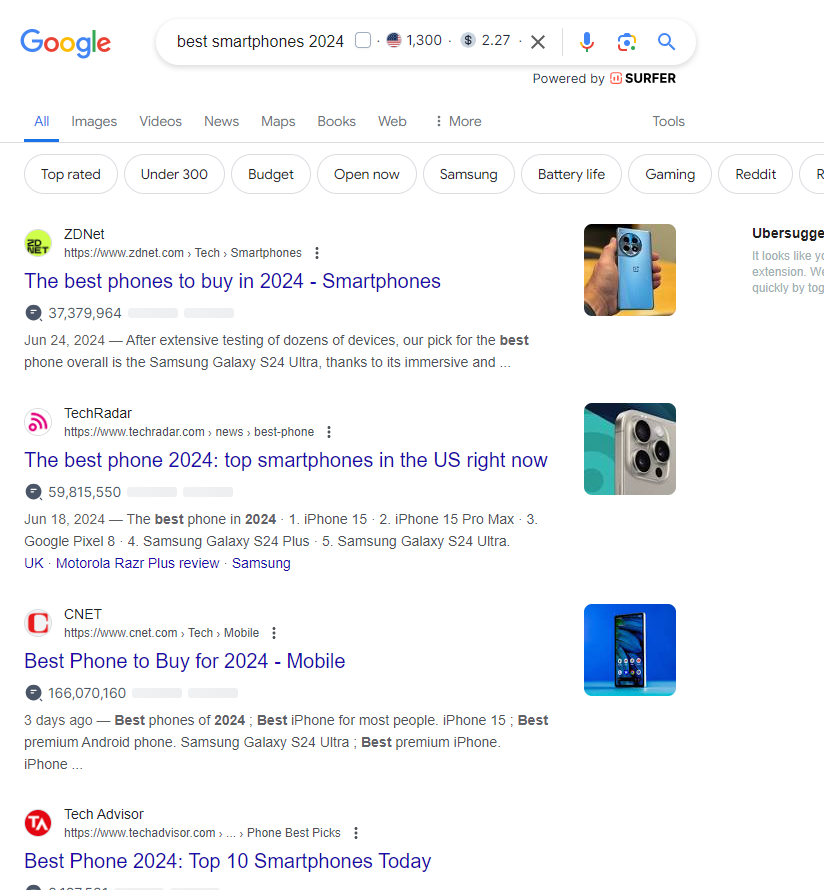
You can see that Google has ranked the articles that have discussed the latest phones. Here, you don’t have to teach how to compare. Instead, you have to compare the phones on your content. This will help the user to decide which phone to purchase.
3. Commercial Search Intent
Commercial search intent occurs when users are looking to buy products or services. They might be comparing options, reading reviews, or looking for the best deals. This type of search intent is common in e-commerce and retail.
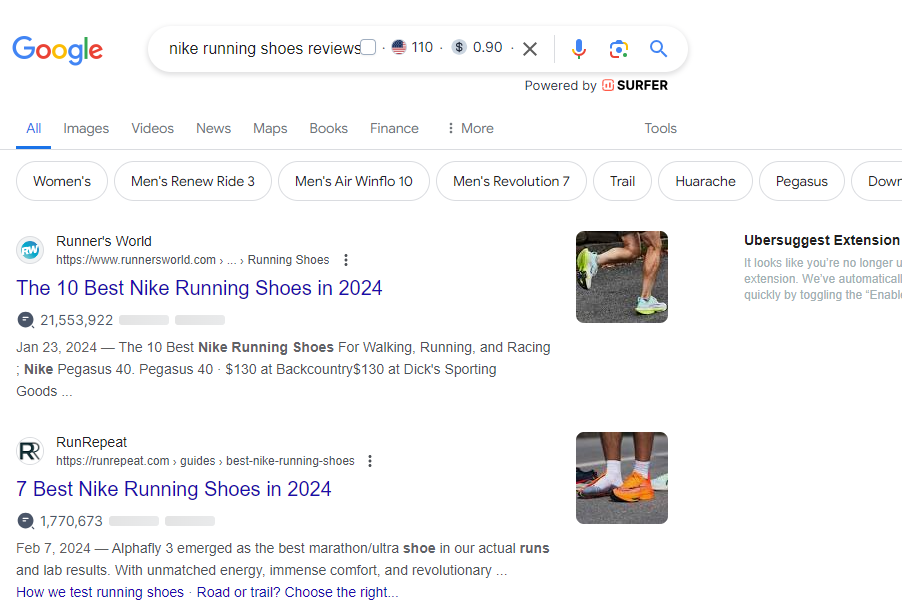
You see, the search intent here was commercial. The user wants to make a purchase. He needs help to decide on the right shoes for him. You need to give reviews and discuss which shoes are perfect for them.
From the SERP you can see that none of these pages sell shoes. Rather, they are helping users to make a decision. Therefore, you can call these keywords both commercial and informational.
The term “Nike running shoes” is a completely commercial keyword. A user will search this term only when he wants to buy shoes. You can see it from the result page. Google is showing pages that actually sell Nike shoes.
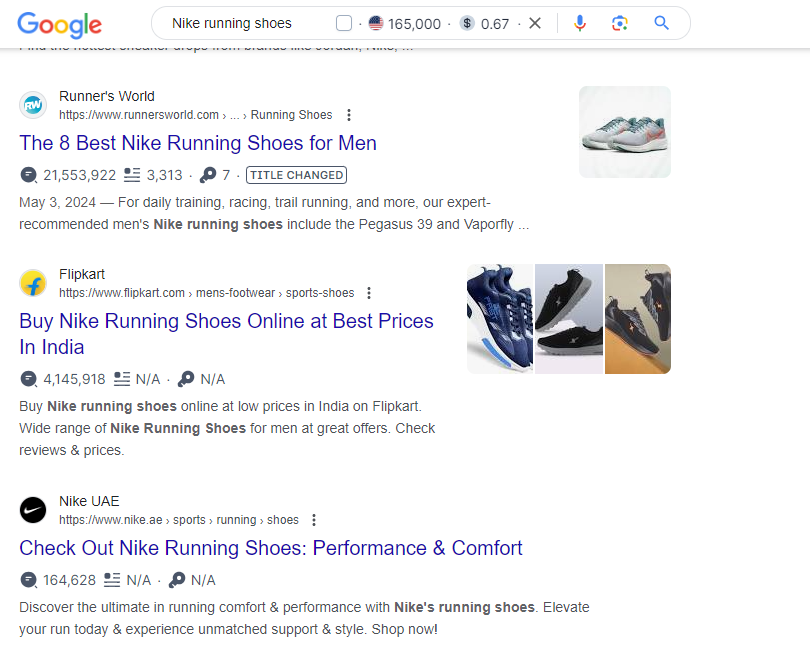
4. Transactional Search Intent
Transactional search intent occurs when people are ready to make a purchase or complete a specific action. These searches show a high intent to buy, subscribe, or sign up. The user has made his mind already. These searches produce more predictive results.
Some examples of transactional keywords include:
- “Buy iPhone 13”
- “Order pizza near me”
- “Subscribe to Netflix”
- “Book hotel in New York”
- “Download Microsoft Office”
Transactional search intent signifies users are ready to act. It’s crucial for businesses to meet these needs efficiently.
Why Do You Need to Understand Search Intent?
Search intent plays a crucial role in SEO. It helps you improve user experience, and boost your chances for ranking. It ensures your website or business appears relevant and valuable.
1. To Satisfy User Intent
You need to understand the search intent to meet it. If you cannot provide the relevant information, it won’t satisfy your user needs. Let’s say you are writing on “Tips for Effective Content Writing in 2024.”
Here, you have to understand the intent first. Your user is looking for tips here to improve his or her writing. Your content should meet that need. But if you write about the importance of content writing, will it benefit them? Will they stay around?
The answer is no.
Users will look for other content by leaving your website. This will increase your bounce rate and create a bad impression to Google. You may have written some good information. But the information you have provided is not relevant. Therefore, users won’t be satisfied.
2. To Rank Higher on the SERP
Google SEO has changed immensely. It goes beyond just using keywords. You have to provide relevant information. Relevancy is a prime ranking factor in 2024. If you miss the intent, you are making a major mistake at the very beginning.
No matter how good you write, users won’t like this. This irrelevant information won’t help you rank. Here is an example of one of our articles. In this article, the focus keyword was “Tips for Copywriting.” The intent here was to get information. The article begins like this:
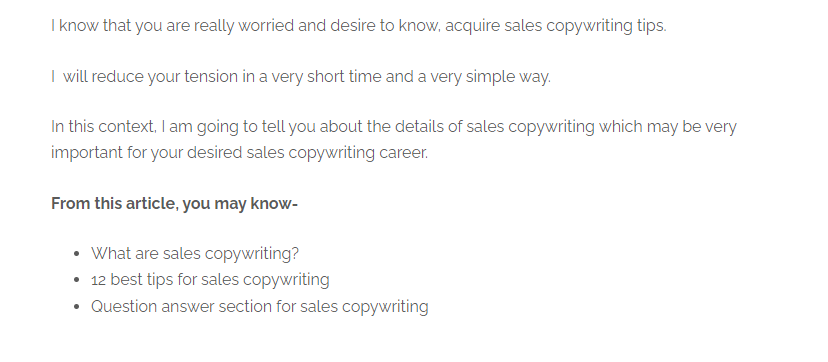
You see, a reader can believe that he is at the right place. He knows that this article will provide him with the necessary information. He will stay and keep reading. This reduces bounce rate and increases user engagement.
It sends positive feedback to the Google algorithm. You appear to be a reliable source for this particular niche. When you understand the intent, you know how to begin an article. You can find the most compelling words. It helps you hook the audience and rank higher on the SERP.
3. To Make Your Content Valuable
Your content needs to add value to the user. Google already has thousands of articles on any given topic. Then why should it rank your article? It will only when you add value. You need to ensure that you are providing information that no one else is providing.
However, you need to keep the information relevant, though. Just writing unnecessary information won’t help. You have to analyze the existing content and find the gap here. Analyze what relevant content is missing?
Try brainstorming. Find information that can match the user’s intent better. Google also suggests writers to focus on user experience, rather than thinking of the popular search engines.

How to Determine Search Intent?
No doubt, search intent is crucial. But how do you perform a search intent analysis? Failing to understand the intent can result in bad content. Don’t worry. I will guide you on how you can understand the intent.
1. Analyze the Given Keywords
Keyword research is generally done by SEO experts. But as a content writer, you should also do your research. Don’t just start writing right away. You need to analyze the keyword first. Sometimes, the keyword itself tells you the intent. For example,
“Tips for DIY End of Lease Cleaning in New York.”
Read the keyword properly. Identify every single word. They will give you valuable information. For example:
- Tips: This word suggests that users are looking for information. Your content should have helpful tips.
- DIY: Your user is not looking for commercial cleaners. Instead, he wants to do the cleaning himself. Therefore, you should avoid talking about commercial cleaning.
- End of lease cleaning: Your focus should be on bond cleaning. You don’t have to talk about garden cleaning.
- New York: This specifies the location. Different places can have different locations. Some tips may not be beneficial for residents in New York. Make sure your information is valid and useful for people living in New York.
Let’s analyze another keyword “Where to buy the best Pizza in Denver?”
- Where: This shows that the user is looking for navigation. You must help him find the best location for the food they are looking for.
- Buy: This hints that the user is willing to make a purchase. He does not want to prepare it at home. So, it’s a commercial keyword as well.
- Best pizza: Here, you need to give reviews and describe why the place you are mentioning is worth trying.
- Denver: Make sure the location you are suggesting is in Denver. Someone who lives in Denver won’t be benefited if you mention best Pizza in Fargo.
2. Pay Attention to Relevant Questions and Queries
Giving the exact information is not enough. You need to give additional and relevant information. It will save your audience from making more searches. This improves user experience and your chance to rank higher.
Think about this article. The primary keyword was “What is search intent?” But just giving a definition won’t be much helpful. So, I did my research to find additional queries. People Also Ask is a good source to find relevant queries.

From the people also ask section, I found relevant topics. It helped me determine the outline. You have seen that I have already mentioned the benefits of search intent for SEO. Because people look for the importance. If I had not mentioned this information, you would have to look for this information on other websites. That would be bad for my content performance.
People also ask is not the only place for information. You can also check the suggested searches. If you scroll down on a search page, you will see a section like this:

Find the relevant queries and mention them in your article. This will make your content more helpful and relevant.
3. Study the SERP
You can also take help from your competitors. I mean the SERP. Since Google has bought them on the first page, it means they have already passed the criteria. That’s why they are on the first page. Otherwise, they would be dumped in the 10th page.
The SERP result can help you gain important insights. Check what information they have provided. Are they commercial, informational, or transactional?
Your competitors already did the homework. You can take the core idea from them. This will save your time. Let’s say, you need to write an article if Bearded dragons are edible.
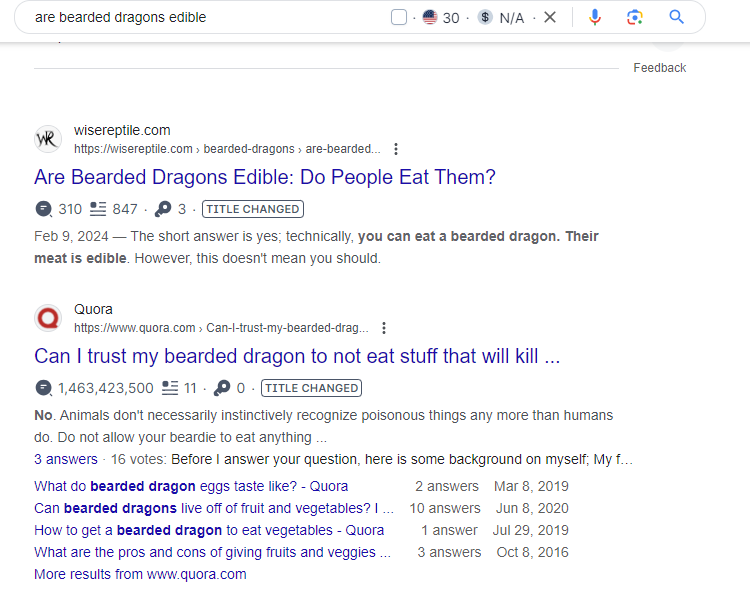
The first article here provides information. So, you also have to do the same. Explain if it is safe to eat bearded dragons or not. Why people should or should not eat them, etc.
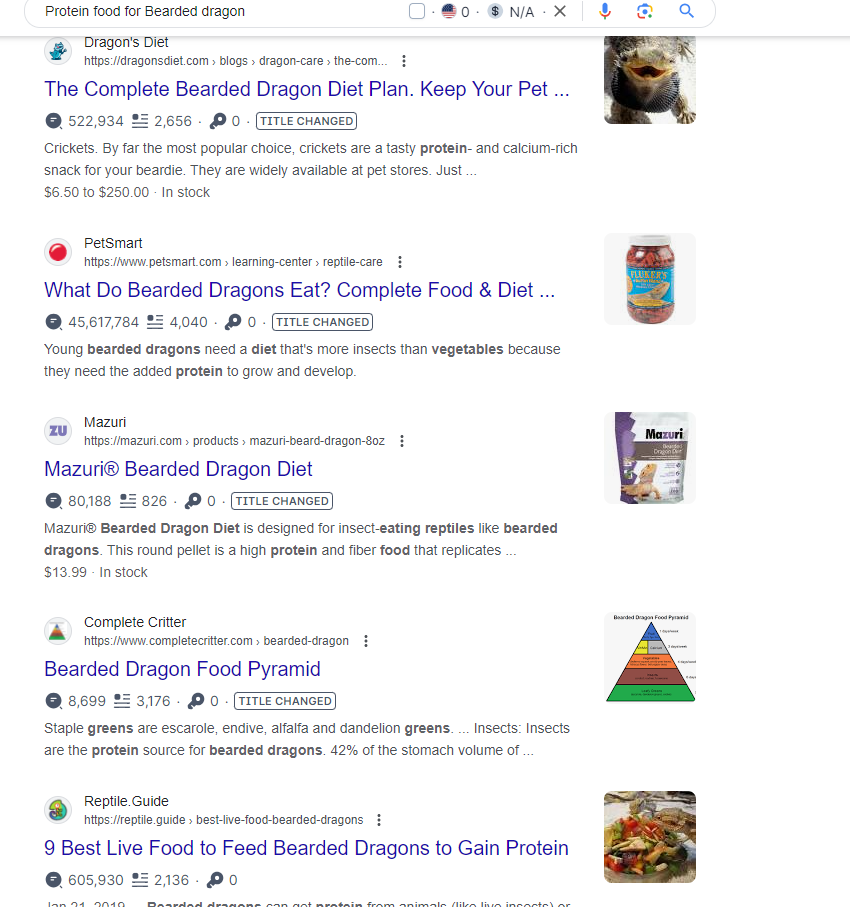
For the next query “protein diet for Bearded dragon” comes with commercial information. It means you need to give information about both food and good brands. This will help your audience choose the right product for them.
Let’s have a more critical example. Dwayne Johnson upcoming movies. This keyword does not offer you much scope to guess. However, the SERP can help. Check what your competitors have done.

It shows that the good articles are the ones that have the latest information. You need to mention movies that are upcoming. Not the ones that have already been watched. Your audience is not looking forward to watching the movies. He just wants to know.
4. Take Help from Google Autosuggest
Google auto suggest is a good way to understand user intent. Sometimes, you may have a broad keyword. It becomes to identify their search intent. When you input the keyword on the search bar, there will be some auto suggestions. These auto suggestions are quite handy.
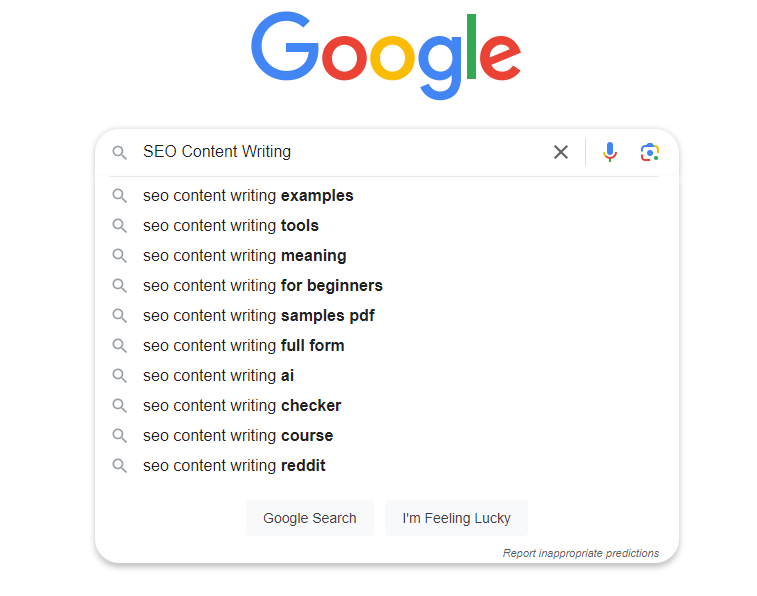
You can see it in the above image. I just wrote SEO content writing. The auto suggest tells me what people are looking for. Audiences are looking for writing tools, checkers, courses, and tips for beginners.
From these suggestions, you can identify the intent. Tools, courses, etc., show that people want to buy them. This means it has commercial intent. Writing for beginners, in contrast, has informational intent.
For deeper understanding, let’s input more words.
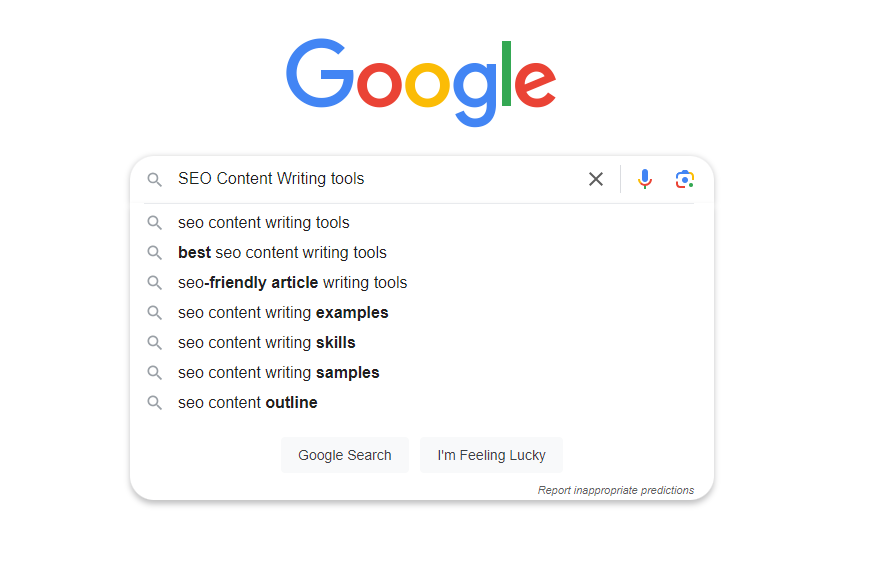
When I have added the word “tools” the suggestions show that the intent of the keyword is mostly commercial. So, you need to give information about various tools, their pros and cons. This will help your audience find the right tools for them.
5. Analyze Your Analytics
This tip will be helpful when updating content. Sometimes, you don’t have to write new articles everyday. If you already have articles on the website, just update them.
You can benefit from Google Analytics. This will help you decide which articles are not working. Check bounce rate and stickiness.
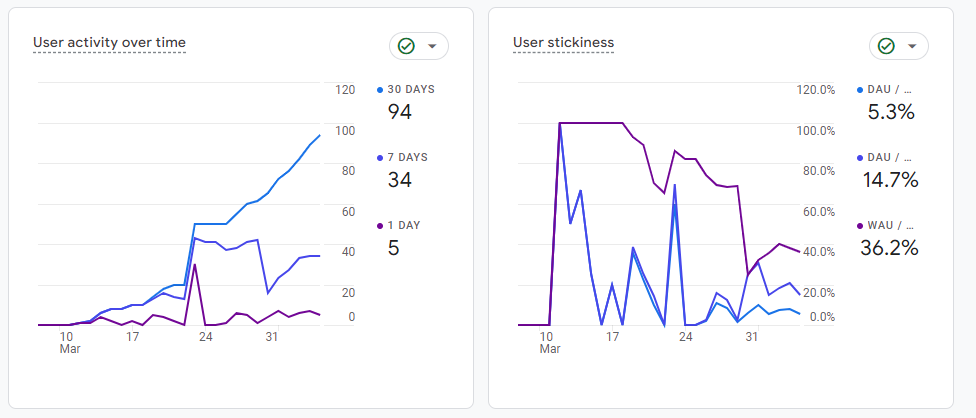
IF a content has a higher bounce rate, then it means the content is not resonating with the audience. You need to update it. Do your research again, and update with more information. This will help your content perform better.
Also identify the content that is doing good. Find the qualities they have. Note down their tone, choice of words, etc. This will help you understand your target audience better. Incorporate these qualities in other articles.
Updating old articles helps them rank higher. You will get more traffic. Integrate Google Analytics to analyze them. It helps you decide if you understood the intent properly or not.
How to Optimize Your Content for Search Intent?
Once you have identified the search intent, it’s time to optimize the content. Each intent requires a different format. You cannot write informational content in the same manner of transactional content.
Here is how you can optimize your content for user intent:
1. Find the Right Questions to Answer
Giving the right answer is not always the primary concern. You also have to find the right questions. Your content must give answers to the right questions.
People also ask, Google auto suggest, people also look for, etc., can help. You must not take any and every question from there. Look for the ones that match your intent. Let’s see an example:

My primary keyword for this query was “Samsung S21 vs S21 FE.” The people also ask has suggested questions. But not all of them are relevant. My user wants to compare S21 and S21 FE. Therefore, the red marked question is related.
If I answer this question, it will make the content informative and valuable. The black marked question is not entirely relevant. It moves away from my intent. It is comparing S21 FE and S20 FE. That’s not our intent. So, we can eliminate that.
A content should have such relevant questions and proper answers. This makes the content valuable and satisfying for the readers. You can also use Answer the Public. It helps you find relevant questions to your keyword.
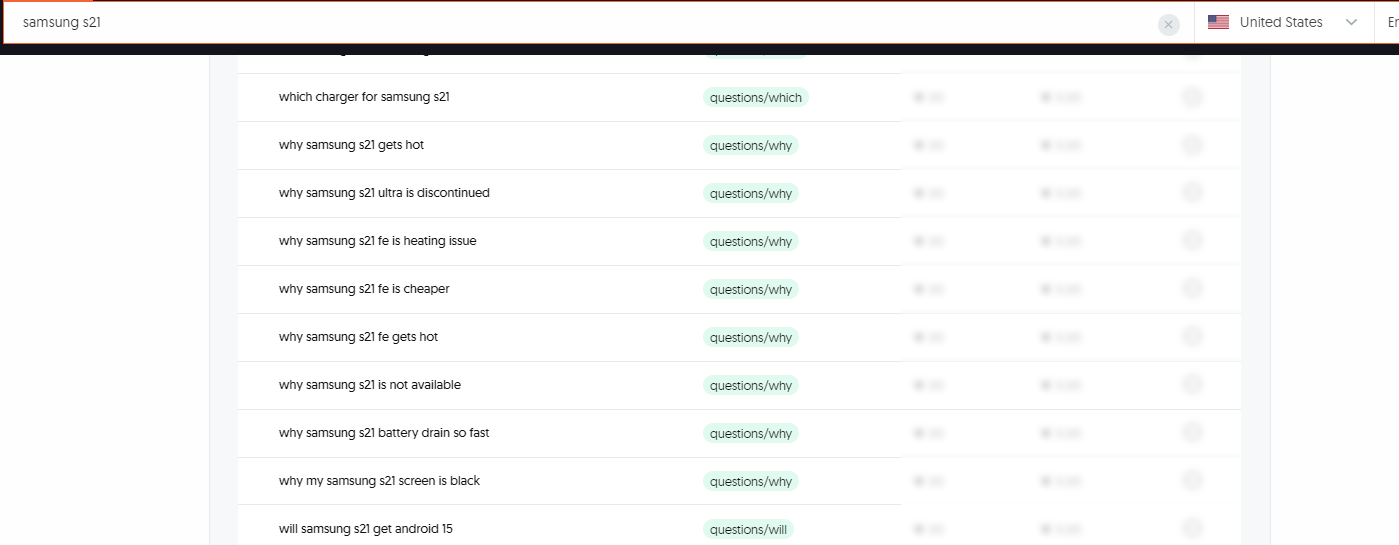
2. Use Google Search Console
For existing content, Google Search Console can provide valuable insights. You can check their performances and find what quereis people are making. You can include those queries in your content. This will improve the performance and value of your content.
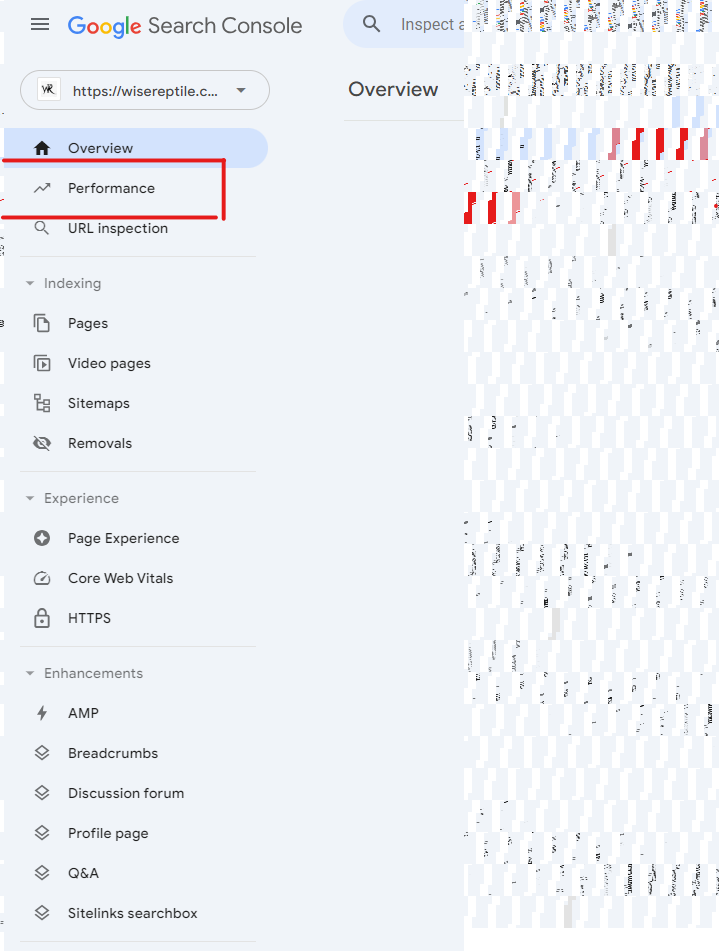
- Go to Search Console and click on performance.
- For informational intent, filter queries to include those using interrogatives relative to your content:
- Where is
- When is
- Why is
You can use those queries in your content and optimize for user intent.
3. Add value for the user
To optimize your content for search intent, first understand what your audience is searching for. Use keywords that match their queries. Ensure your content is relevant and provides answers quickly.
Break up text with headings and bullet points for easy scanning. Add images or videos to enhance understanding. Keep sentences short and clear. Use internal and external links to offer more information.
Make sure your content is mobile-friendly. Update regularly to keep it current. Engage readers with a clear call to action. This approach will add value for users and improve your search rankings.
4. Help Machines Read Your Content
You need to use clear and simple language to help machines read your content. Structure your text with headings and subheadings. Include keywords naturally within your content.
Use meta tags like title and description to summarize your content. Keep paragraphs short and focused. Use schema markup to give context to search engines. Regularly update your content to keep it fresh. This will make it easier for machines to understand and rank your site.
5. Use Schema Markup
It’s not difficult to set the right schema markup. Here is what you can do it:
- Choose the type of schema markup that suits your content (e.g., Article, Recipe, Product).
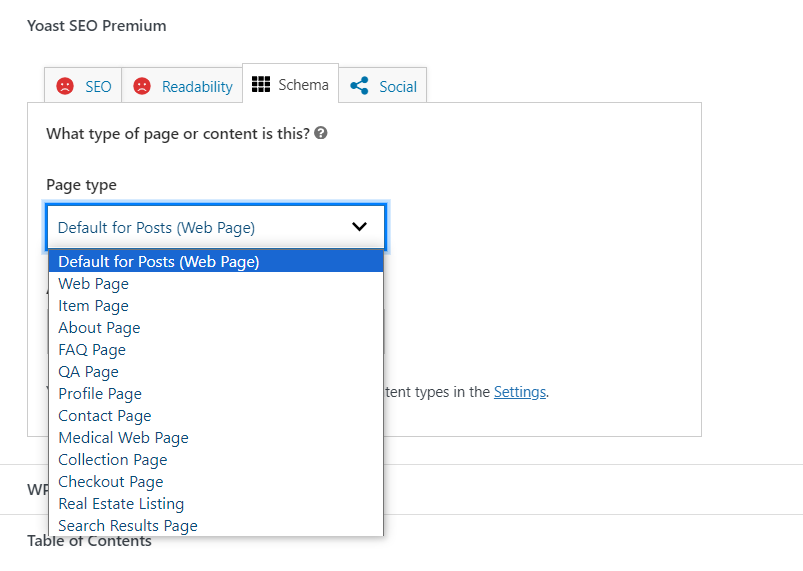
- Visit Schema.org to find the appropriate markup for your content type.
- Add schema markup to your HTML using JSON-LD format.
- Include key details like title, description, and URL in the markup.
- Test your schema markup using Google’s Structured Data Testing Tool.
- Implement the validated schema markup on your web pages.
- Regularly update your schema markup to reflect content changes.
The 3 C’s of Search Intent
The 3 C’s of search intent are Content, Context, and Clarity. These elements help ensure your content meets user needs and improves search engine ranking.
1. Content
Create valuable content that answers user queries. Use relevant keywords naturally throughout the text. Make sure your content is informative and engaging. Update it regularly to keep it current and accurate.
2. Context
Understand the context of user searches. Analyze what users are looking for when they use specific keywords. Tailor your content to match the search intent. Use data from analytics to refine and improve your content over time.
3. Clarity
Write clearly and concisely. Avoid jargon and complex language. Use short sentences and simple words. Structure your content with headings, bullet points, and images. Make it easy for users to find the information they need quickly.
Frequently Asked Questions
Q: How do you define search intent?
Search intent refers to the reason behind a user’s search query. It shows what the user expects to find when they enter a keyword. Search engines analyze intent to deliver the most relevant results. Understanding intent helps create content that matches user needs and improves search rankings.
Q: What are the 3 C’s of search intent?
The 3 C’s of search intent are Content Type, Content Format, and Content Angle. Content Type refers to the kind of content ranking for a keyword, such as blog posts or product pages. Content Format defines its structure. Content Angle reflects the unique perspective or approach used.
Q: Can a keyword have multiple search intents?
Yes, a keyword can have multiple search intents. Some users may look for information, while others may want to make a purchase. Search engines determine the dominant intent by analyzing user behavior. Mixed-intent keywords require a balanced content strategy to target different user needs.
Q: What are some tools to analyze search intent?
Tools like Google Search, SEMrush, Ahrefs, and Moz help analyze search intent. Google’s search results show the dominant intent behind a keyword. SEMrush and Ahrefs provide keyword insights, including intent classification. Moz offers data on ranking pages to help understand user expectations.
Q: How does search intent impact keyword research?
Search intent shapes keyword research by identifying what users expect to find. Choosing keywords without considering intent can lead to mismatched content. Understanding intent ensures content aligns with user expectations, increasing engagement and rankings. Targeting the right intent improves visibility and attracts relevant traffic.
Q: How can I optimize content for different types of search intent?
Optimizing content for search intent requires creating content that matches user expectations. Informational queries need detailed articles or guides. Navigational searches require brand-focused pages, while transactional intent benefits from product pages or service descriptions. Commercial intent works best with comparisons or reviews, and aligning content with intent improves rankings and engagement.
Final Words
So, search intent is the purpose behind a user’s online search. It guides how content should be created to meet user needs effectively. You can improve user experience, increase engagement, and boost conversions by understanding and optimizing user intent.
At Grow DigiBusiness, we recognize the importance of search intent. We craft content that aligns with what users are looking for, and ensure relevancy and value. This approach helps our clients achieve better search rankings and business success.
